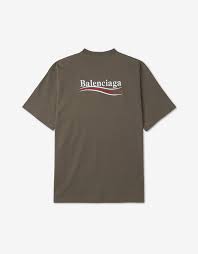Introduction
Balenciaga, a name synonymous with luxury and avant-garde fashion, has carved out a distinct place in the world of high-end clothing. Founded by the Spanish designer Cristóbal Balenciaga in 1917, the brand has evolved over the decades, but its core aesthetic remains bold, minimal, and unmistakably unique. In this article, we will explore Balenciaga’s signature style, the evolution of its clothing lines, and how the brand continues to influence the fashion industry today.
The Origins of Balenciaga
Balenciaga began as a couture house in San Sebastián, Spain. Cristóbal Balenciaga was known for his innovative designs and masterful tailoring. His creations often featured structured silhouettes and an emphasis on craftsmanship. This dedication to quality set the stage for what would become the brand’s future direction.
After relocating to Paris in 1937, Balenciaga gained acclaim for his distinctive styles, including the introduction of the tunic dress and the balloon silhouette. His ability to merge boldness with minimalism laid the groundwork for the aesthetic that would define Balenciaga in the years to come.
The Evolution of Balenciaga Clothing
In recent years, Balenciaga has undergone a significant transformation under the creative direction of Demna Gvasalia, who took the helm in 2015. Gvasalia’s vision has been pivotal in redefining Balenciaga clothing, making it more accessible while maintaining the brand’s luxurious appeal. His approach has been characterized by a mix of streetwear influences and high fashion, resulting in a fresh and dynamic aesthetic.
Boldness in Design
One of the hallmarks of Balenciaga’s current aesthetic is its boldness. The brand is not afraid to take risks, which is evident in its choice of colors, shapes, and materials. From oversized silhouettes to exaggerated proportions, Balenciaga clothing often challenges conventional fashion norms. For instance, the brand’s use of oversized outerwear and chunky footwear has created a statement that resonates with a younger audience seeking comfort without sacrificing style.
Minimalism Meets Statement Pieces
While Balenciaga is known for its bold designs, minimalism also plays a crucial role in its aesthetic. The brand often balances its statement pieces with clean lines and simple color palettes. This juxtaposition creates a sophisticated look that appeals to both avant-garde and traditional fashion lovers. Classic black and white pieces, for example, are frequently featured alongside bolder, more colorful items, allowing for versatility in styling.
Distinctive Accessories
Accessories are another area where Balenciaga excels. The brand’s bags, shoes, and other accessories often feature unique designs that stand out in the luxury market. The iconic “Triple S” sneaker, for instance, has become a symbol of high fashion and street style alike. Its chunky silhouette and distinctive colorways have made it a must-have item for fashion enthusiasts.
The brand also produces bags like the “Hourglass” and the “City,” which are characterized by their unique shapes and modern aesthetics. These pieces embody the balance between boldness and minimalism, making them perfect for both everyday wear and special occasions.
Cultural Impact and Controversies
Balenciaga’s bold aesthetic has not been without its controversies. The brand often pushes boundaries, leading to mixed reactions from the public and critics alike. Some of its campaigns and collections have sparked debates about cultural appropriation, commercialism, and the nature of fashion itself. However, this willingness to provoke thought and discussion is part of what keeps Balenciaga at the forefront of the fashion conversation.
Demna Gvasalia’s approach often mirrors the zeitgeist of contemporary culture, reflecting societal shifts and urban influences. This connection to current events has allowed Balenciaga to maintain its relevance in a rapidly changing fashion landscape.
Sustainability and Future Directions
As the fashion industry grapples with the challenges of sustainability, Balenciaga is also exploring ways to address these issues. The brand has started to incorporate more eco-friendly materials into its collections and is working towards greater transparency in its production processes. This shift aligns with the growing demand for ethical fashion and reflects a broader trend among luxury brands to prioritize sustainability.
Balenciaga’s commitment to sustainability does not compromise its signature aesthetic. Instead, it provides an opportunity for the brand to innovate and redefine what luxury means in the 21st century. By blending bold designs with sustainable practices, Balenciaga can continue to captivate audiences while promoting responsible fashion.
Conclusion
Balenciaga’s signature aesthetic of boldness, minimalism, and distinctiveness has made it a leader in the luxury fashion industry. The brand’s evolution from a couture house to a streetwear influencer demonstrates its adaptability and willingness to embrace change. As Balenciaga continues to push the boundaries of fashion, it remains committed to crafting unique clothing that resonates with a diverse audience.
Through innovative designs, striking accessories, and a focus on sustainability, Balenciaga is poised to maintain its influential status in the fashion world. The brand’s ability to blend traditional craftsmanship with modern sensibilities ensures that it will continue to inspire and provoke thought for years to come. Whether you’re a longtime admirer of Balenciaga clothing or a newcomer to its bold aesthetic, there’s no denying the impact this brand has had on contemporary fashion.
